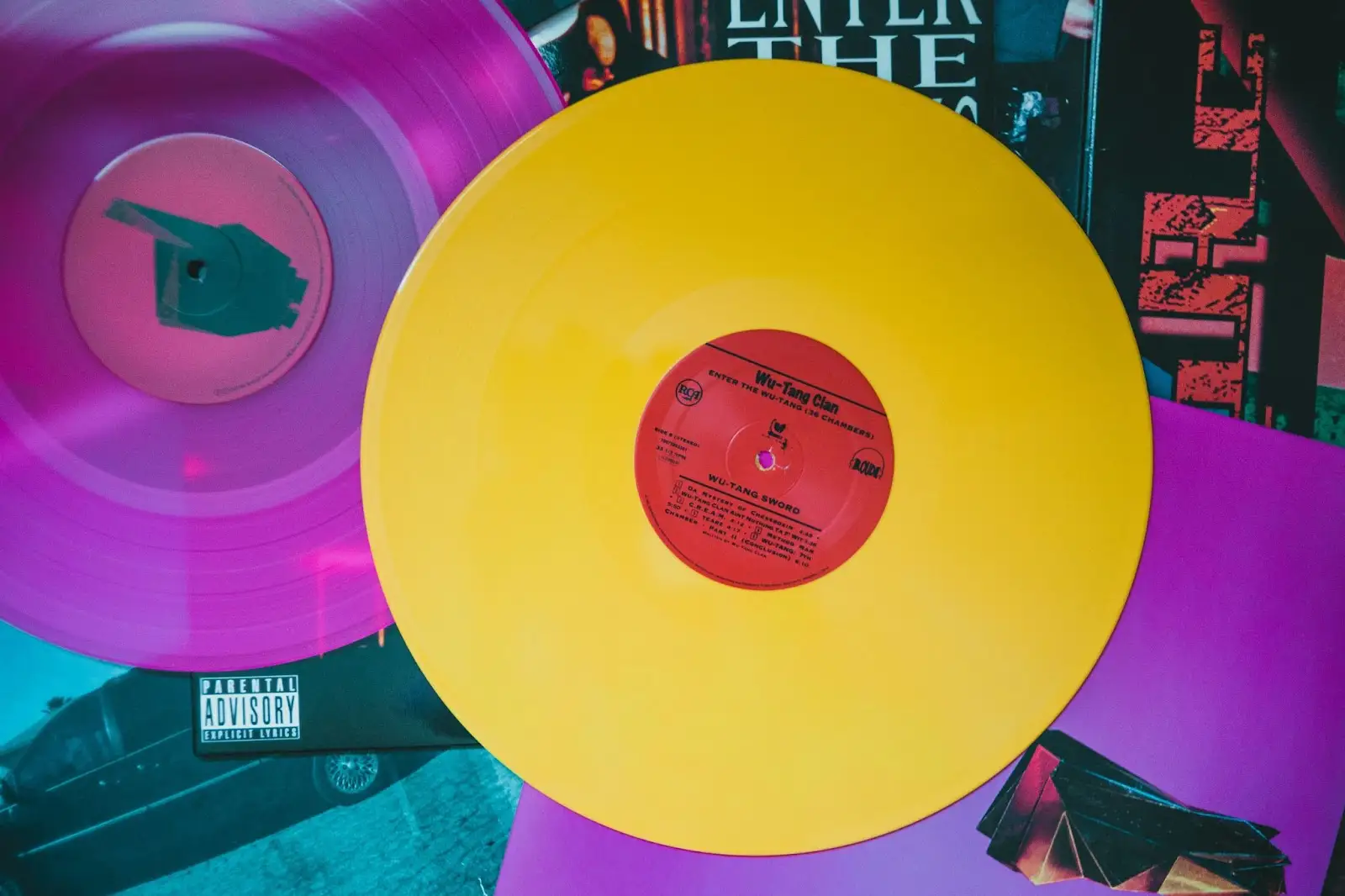French House Music. It's as inevitable as death and taxes, but infinitely more enjoyable. Whether you’re an avid club-goer, or an occasional guest at a wedding, the chances are you’ve been exposed to one of the most influential genres in the electronic music scene.
In this article we’ll be taking a look at the history of French House, along with some key movers and shakers that helped define the sound.
First though, grab your vocoder and slip on a copy of Moon Boy ; let's take a look at the characteristics that define this enduring musical style.
Defining Characteristics of French House
French House (also known as French Touch , Filter House , and Tekfunk ), can loosely be described as a combination of three production styles: space disco, euro-disco, and American deep house music.
Merging elements of disco, funk, and house gives the genre a distinctive sound. Here's some French House elements you'll find in nearly every track.
Rhythm
With a tempo range of 110-130BPM, a French House track needs a solid beat as its rhythmic foundation. Classic house music 4-on-the-floor rhythms are predominant, with infectious grooves being a must to get those booties on the dance floor.
Sampling
French Touch relies heavily on the use of disco samples. These samples are usually heavily effected (see Effects ), and artists like French duo Daft Punk would sometimes build an original hook around the sample, using the harmonic foundations of the original to build from.
One of the most famous French touch songs, Music Sounds Better With You , uses only the tiniest sample from an old disco track - a little can go a long way! And you can bet they sorted out their sample clearance .
Basslines
Funky and driving bass lines are another feature of this music style. Drawing on funk and disco grooves the bass line counters the tight drum patterns to create that infectious French sound as heard on the classic Intro by Falke and Braxe.
Effects
The vocoder has become synonymous with the French Touch sound. In addition to vocoded choruses, phasers and filter sweeps are common effects used in the style, in a nod to its space disco roots. These dance music tracks were literally dripping in effects.
Feel Good Vibes
Finally, one characteristic of the French House scene is the unashamedly feel-good nature of the music. Thanks in part to its disco roots French House songs are nearly always infectiously upbeat.
But how did this all come about?
History of French House Music

Early Years
The first twinkle of what would later be dubbed French House started happening in the late 1980s. French DJs like David Guetta, Ludovic Navarre, and Guillaume la Tortue began tinkering around with elements from funk, disco, and dance music and techno sub-genres from Chicago, New York, and Detroit.
Their laboratory was the Paris club scene, notably the Palace where French Touch parties were organized by photographer Jean Claude Lagrèze with the aim of introducing more people to house music.
Originally the style was referred to as disco house, or nu-house, around Europe, despite the term French Touch first being used in 1987. Ironically, it wasn’t until a UK journalist used the phrase in an album review that it became widely used.
First Releases
In the mid-90s Thomas Bangalter released what can be considered to be the first French House EP on his (now defunct) label Roulé.
A year later, Philippe Zdar and Étienne de Crécy, under the name Motorbass, released Pansoul. This is widely recognized as the first full length French Touch album.
By this point these early French House experiments had become accepted by UK and European DJs.
French Touch Goes Mainstream
Around the middle of the 1990s dance music's popularity was rising, in part thanks to the influence of the UK EDM scene. But French house music was mainly limited to success in the UK, France, and elsewhere in Europe.
Then, in 1997, along came Daft Punk, who changed everything.
Formed by Thomas Bangalter and Guy-Manuel de Homem Christo after their pre-Daft Punk band - an indie rock project - split, the duo released their debut album Homework to mixed reviews. What was critical was that the French duo were supported by American labels, bringing the French touch to a new, global audience.
Commercial success soon followed, not only for Daft Punk, but artists like Cassius, Bob Sinclar, Stardust and Air.
The Daft Punk Legacy
Daft Punk dominated dance music for several years, but it could be argued they brought the French House wave to an end with the release of their 2001 album Discovery . So effortless was the mix of synth-sweep laden hooks and filtered loops that it seemed kind of pointless to try and reinvent the genre.
Key artists like Alan Braxe and Fred Falke moved to a different sound, and after Madonna released her French house-influenced album Confessions on a Dance Floor in 2005, nobody seemed that interested in new house tracks.
Maybe Madonna killed French house? Who knows. Regardless, the unmistakeable sound is still being explored and expanded thanks to Ed Banger Records. Run by Daft Punk's former manager Pedro Winter the label focuses on all things house, including French house. synthpop, hip hop and electro.
The Future of French House
The show isn't over yet! In 2022 Parisian producer Alan Braxe, along with DJ Falcon, released new solo work on a fledgling label dedicated to releasing new and old French house music. While it's unlikely to return to the heady days of the early oughts, French house music is alive and well.
5 Standout French House Tracks

Daft Punk - One More Time
It's a no brainer. The opening track from Daft Punk's 2001 album sums up everything you need to know about French touch.
If you're curious to see how the sausage is made, check out the video below to see a breakdown of how the sample was lifted from the original song, More Spell on You by Eddie Johns. It's fascinating stuff!
Jess and Crabbe - Big Booya
French touch producers were often influenced by hip hop and R&B, leading to crossover between the genres. This track uses a potty-mouthed sample from the Notorious BIG, and blends it seamlessly with a bouncing bass line and disco strings.
Stardust - Music Sounds Better With You
A definitive French touch track using a very economical 2-second sample from Chaka Khan's Fate, this is the one and only single by the trio. Featuring vocalist Benjamin Diamond, the trio also comprised Daft Punk's Thomas Bangalter and DJ/producer Alan Braxe.
Bangalter declined an offer of $3 million from Virgin to produce a Stardust album, making the trio's output short-lived.
I:Cube - Disco Cubizm (Daft Punk Remix)
This 1996 remix of I:Cube's second single was done before Daft Punk unleashed Homework into the world, but all the classic French touch elements come into play on this jazz-influenced track. Whirling keyboard riffs, filtered loops and an infectious groove combine to show that less is more.
Phoenix - If I Ever Feel Better (Buffalo Bunch remix)
Phoenix are a French pop-rock act popular in Europe and the USA. This Buffalo Bunch remix is a testament to how the French house sound has evolved to become harder, yet still retains its roots.
Notable French House Artists and Producers
The above is just the tip of the iceberg when it comes to the French house scene. To dive deeper check out work by the following artists and producers. Some of them helped develop French house the first time around; others are keeping the torch going.
- Fred Falke
- Alan Braxe
- Bob Sinclar
- DJ Falcon
- Rundfunk
- Le Knight Club





